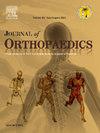"探索联系":糖尿病患者与非糖尿病患者的慢性肌肉骨骼疼痛
IF 1.5
Q3 ORTHOPEDICS
引用次数: 0
摘要
导言糖尿病(DM)已经超越了国界,影响着全球各地的人群,由于糖化终产物的积累,容易导致人体僵硬和肌肉骨骼疼痛。肌肉骨骼疼痛是一种常见但经常被忽视的并发症。疼痛机制可分为痛觉性、神经病理性、神经痉挛性和特发性。Kosek-et-al 提出了四项标准,用于识别影响肌肉骨骼系统的非病理性疼痛。研究旨在评估慢性肌肉骨骼疼痛(cMSK)的患病率及其与糖尿病和血糖控制的关系,并评估 cMSK 疼痛的合并症。年龄在 30 岁以上、在门诊部就诊的 2 型糖尿病患者参与了研究(研究组)。研究还招募了年龄相仿的健康人(对照组)。我们收集了每组 300 名参与者的数据。分析基于 HbA1c 水平、随机血糖 (RBS)、临床病史和合并症。结果 cMSK 疼痛的总患病率为 23.3%(600 人中有 140 人)。在第一组/糖尿病组中,发病率为 27.7%;在第二组/健康人群中,发病率为 19%,几率比为 1.6。在第一组和第二组中,最常报告 cMSK 的部位分别是肩部(32.5%)和膝部(36.8%)。我们发现 cMSK 疼痛与 HbA1c 水平之间存在明显关联(p < 0.005)。我们没有发现 cMSK 与 DM、HTN、血脂异常或甲状腺功能减退症之间存在明显关联(P > 0.05)。解决肌肉骨骼疼痛问题对于提高糖尿病患者的整体生活质量至关重要。临床医生应采取积极、全面的方法来控制糖尿病患者的疼痛。在常规体检中使用简单的北欧调查问卷有助于筛查关节和周围软组织病变,预防未来可能导致残疾的并发症。本文章由计算机程序翻译,如有差异,请以英文原文为准。
“Exploring The Nexus”: Chronic musculoskeletal pain in diabetic vs non-diabetic population
Introduction
Diabetes-mellitus (DM) has transcended the boundaries and affected populations across globe, it predisposes individual to stiffness and musculoskeletal-pain due to accumulation of glycation-end-products. Musculoskeletal-pain is a common yet frequently neglected complication. Pain mechanisms have been categorized as nociceptive, neuropathic, nociplastic, and idiopathic. Four criteria were put by Kosek-et-al to identify nociplastic pain that affects the musculoskeletal-system. Study aimed to evaluate prevalence of chronic musculoskeletal (cMSK) pain and its association with diabetes and glycaemic control and to evaluate comorbid conditions of cMSK pain.
Methods and materials
A prospective case-control study was conducted at a level-1-tertiary-care-facility. Patients with type-2 DM above 30-years-age who visited outpatient department participated in the study (study group). Age-matched equal number of healthy individuals (control-cohort) were recruited in the study. We collected data from 300 participants in each group. Analysis was done based-on HbA1c-levels, random-blood-sugar (RBS),clinical-history, and comorbidities. Information regarding cMSK-pain was gathered using modified version of Nordic standard questionnaire.
Results
Overall prevalence of cMSK pain was 23.3 % (140 out of 600). Among Group-1/Diabetic group, it was 27.7 % and among group-2/Healthy Cohort it was 19 % and the odds ratio was 1.6. Most commonly reported region with cMSK among group-1 and group-2 was shoulder (32.5 %) and knee (36.8 %) respectively. We found a significant association between cMSK-pain and HbA1c levels (p < 0.005). and individuals with HbA1c levels of more than 12 reported involvements in multiple regions. We didn't find significant association between cMSK and DM, HTN, dyslipidemia, or hypothyroidism (P > 0.05).
Conclusion
Study highlights higher-prevalence and significant impact of cMSK pain in diabetic patients compared to non-diabetic individuals. Addressing musculoskeletal-pain is crucial for improving overall quality-of-life in diabetic patients. Clinicians should adopt a proactive and comprehensive approach to pain management in diabetics. Using a simple Nordic questionnaire during routine check-ups helps with screening of joint and surrounding soft tissue pathology, preventing future complications that could lead to disability.
求助全文
通过发布文献求助,成功后即可免费获取论文全文。
去求助
来源期刊

Journal of orthopaedics
ORTHOPEDICS-
CiteScore
3.50
自引率
6.70%
发文量
202
审稿时长
56 days
期刊介绍:
Journal of Orthopaedics aims to be a leading journal in orthopaedics and contribute towards the improvement of quality of orthopedic health care. The journal publishes original research work and review articles related to different aspects of orthopaedics including Arthroplasty, Arthroscopy, Sports Medicine, Trauma, Spine and Spinal deformities, Pediatric orthopaedics, limb reconstruction procedures, hand surgery, and orthopaedic oncology. It also publishes articles on continuing education, health-related information, case reports and letters to the editor. It is requested to note that the journal has an international readership and all submissions should be aimed at specifying something about the setting in which the work was conducted. Authors must also provide any specific reasons for the research and also provide an elaborate description of the results.
 求助内容:
求助内容: 应助结果提醒方式:
应助结果提醒方式:


